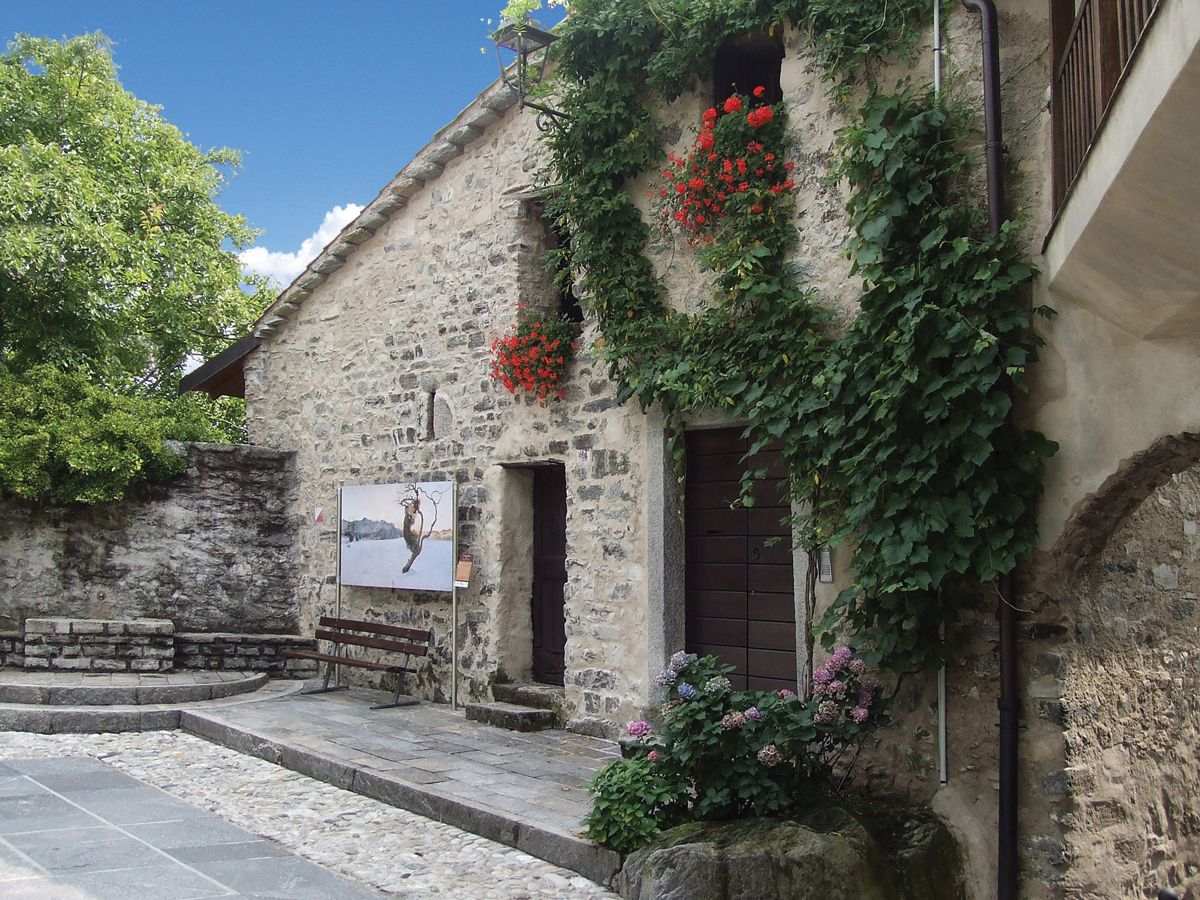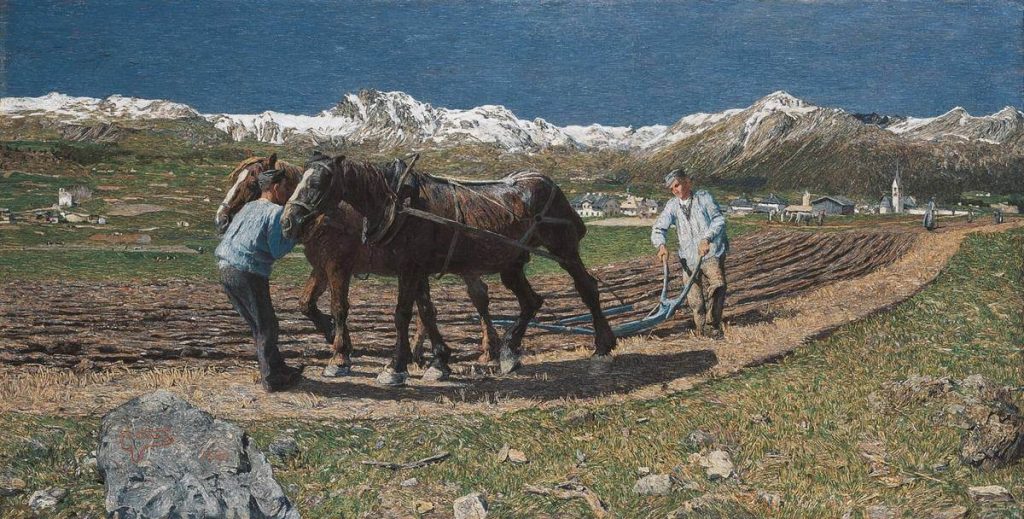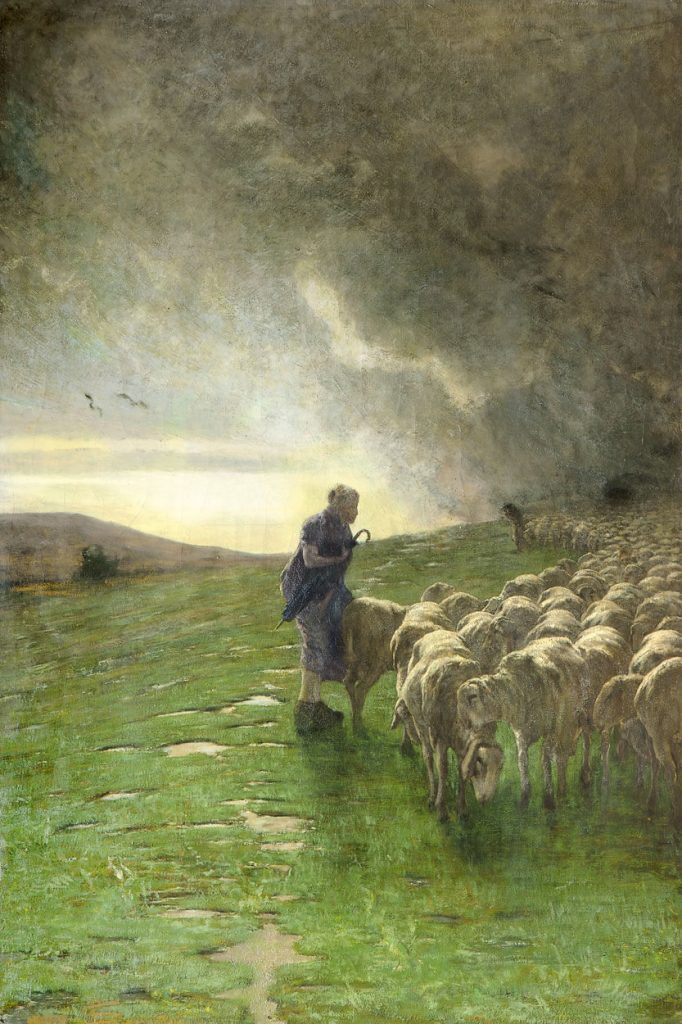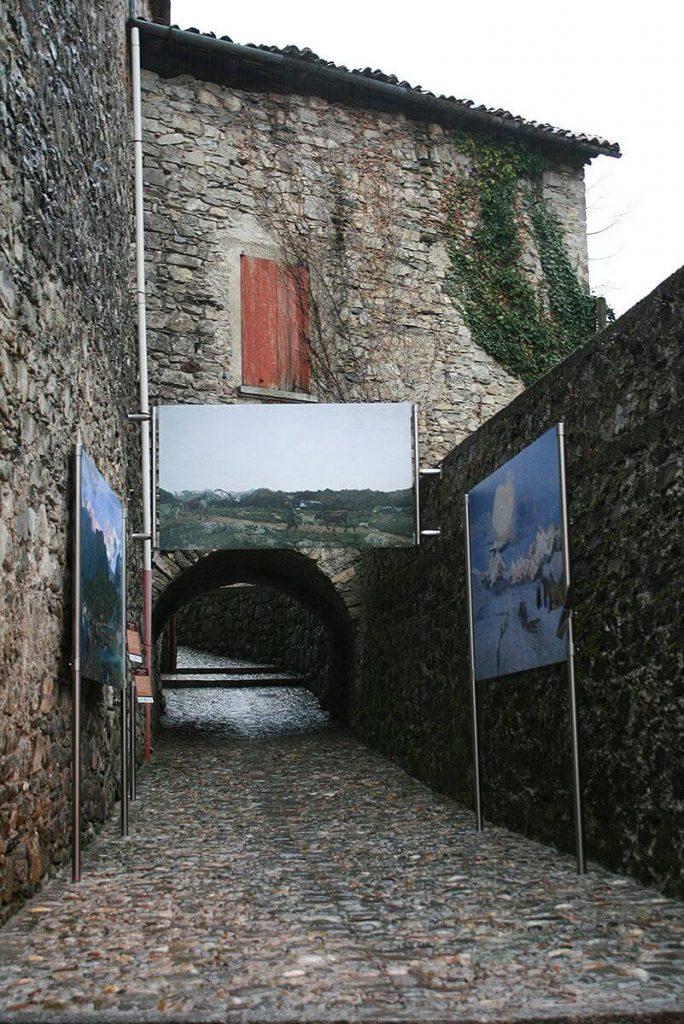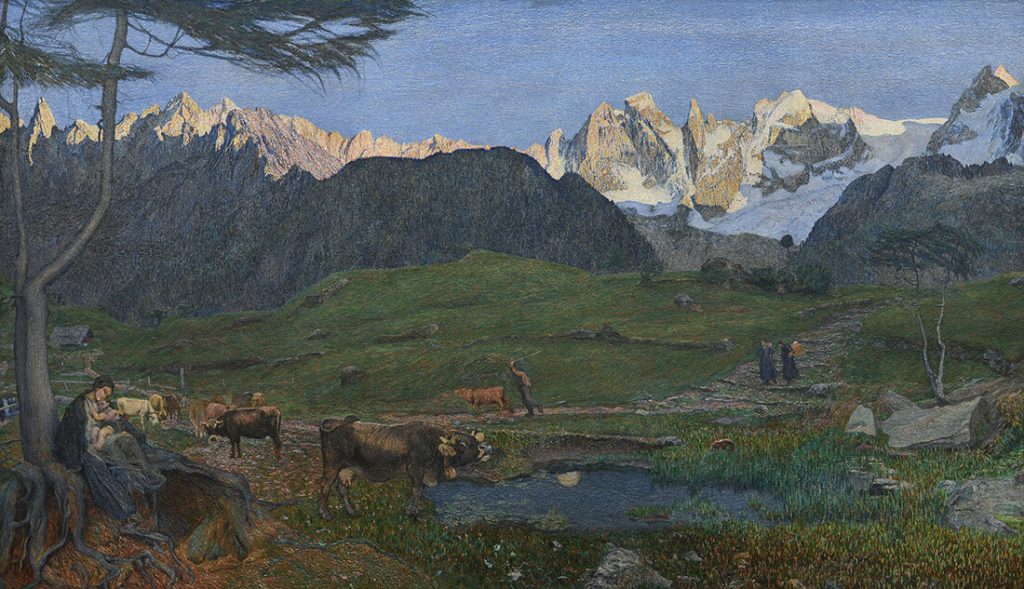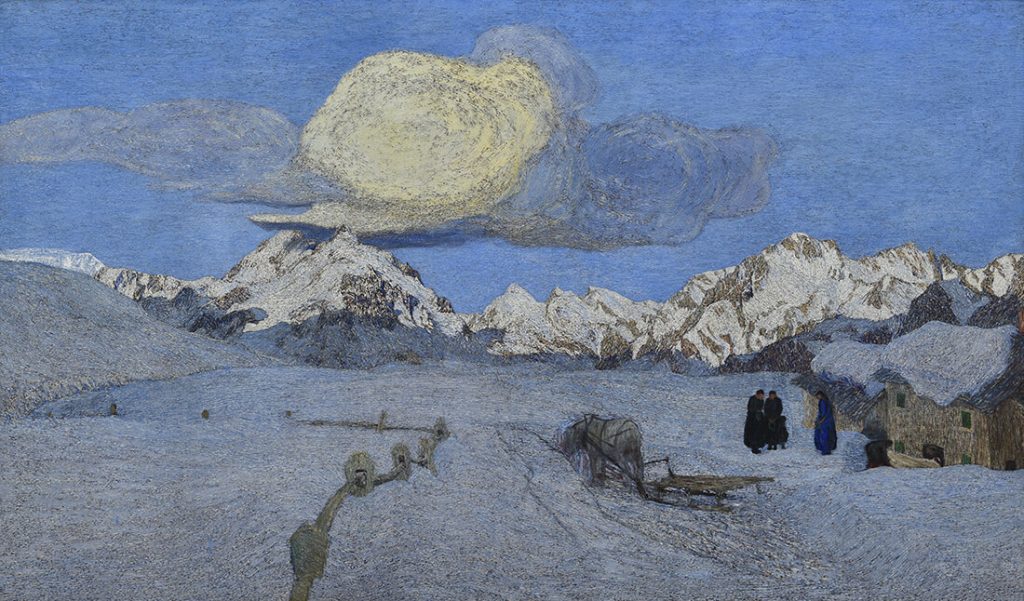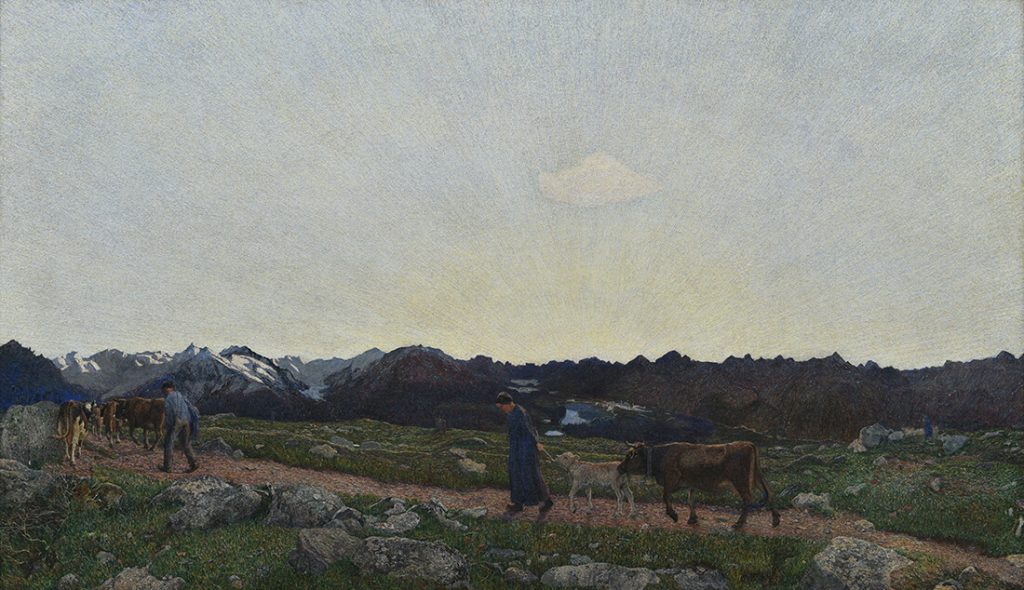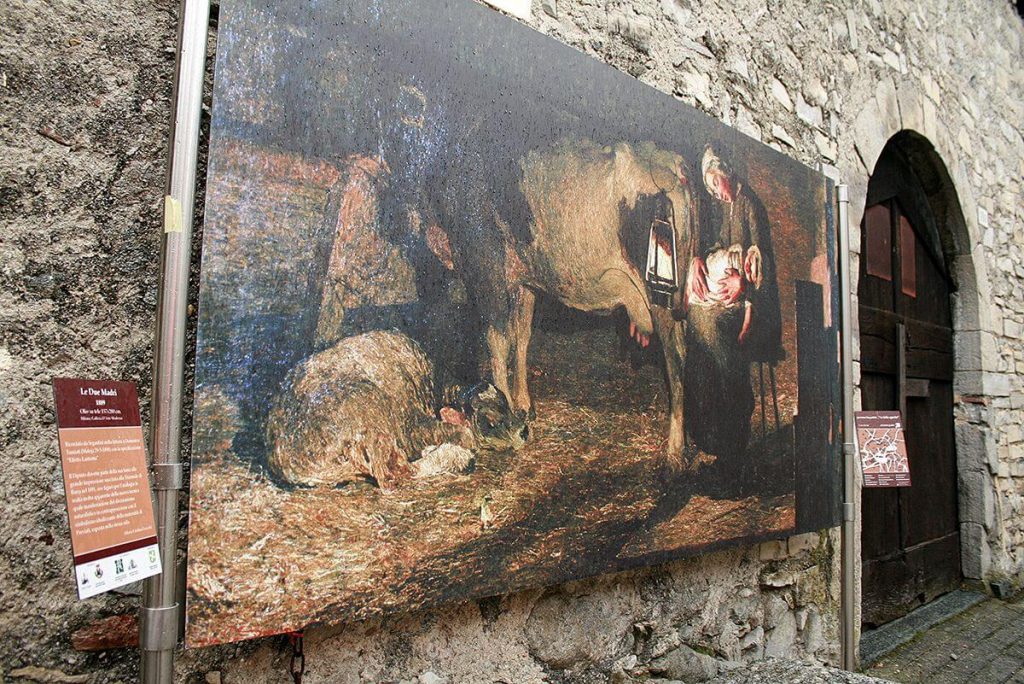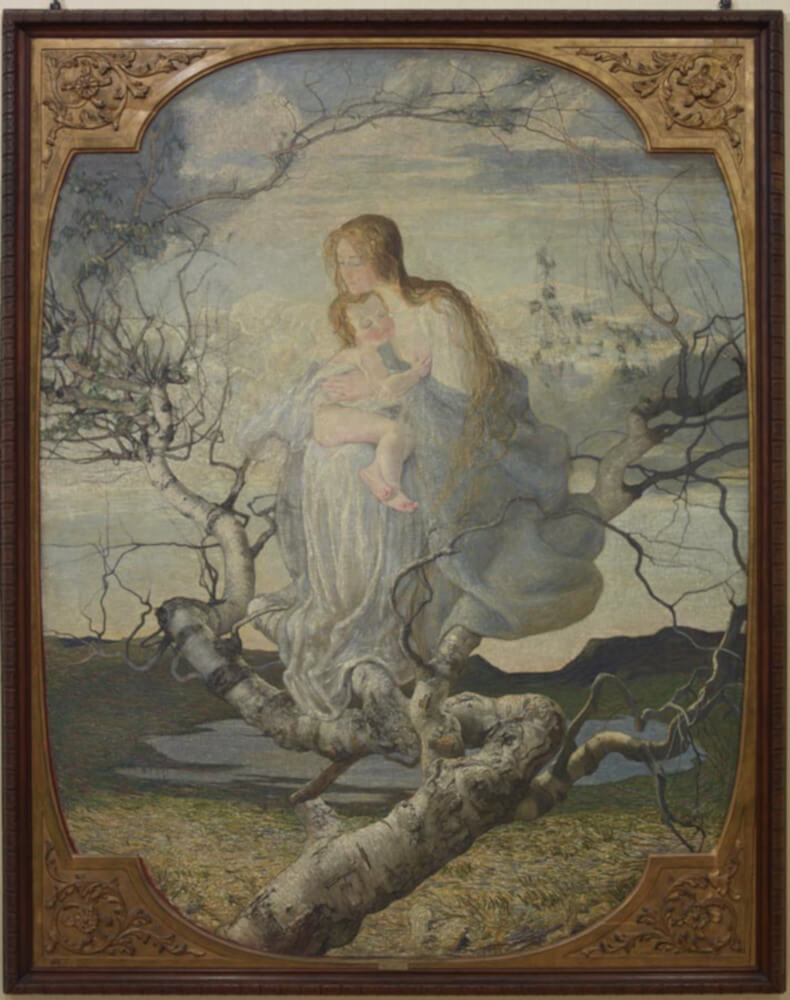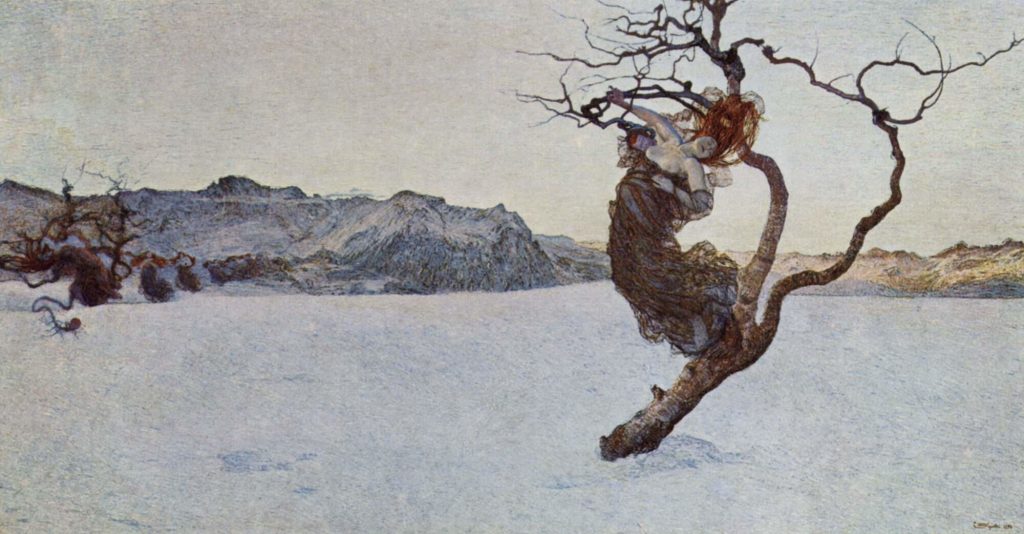Summary
- Presentation of the town of Caglio, Italy, where Segantini lived.
- History of Giovanni Segantini.
- Overview of the outdoor permanent exhibition.
- Segantini’s most significant artworks by theme.
The Town
The town of Caglio (Lombardy, Italy) is a very small town in the north of Italy, at the foot of the Alps. It is a nice destination for a long vacation but also for shorter trips in the mountains, being the start of a range of different hiking trails. The center of the town includes a small medieval section, still inhabited and perfectly conserved.
However, Caglio has another peculiarity. For some months at the end of 1800, it was home to Giovanni Segantini (1858-1899). He was an eclectic painter and traveler whose painting style evolved and developed during his whole life. That’s the reason why on the occasion of the 150th year from Segantini’s birth, in 2008, the town created a very enjoyable exhibition, totally en plein air and dispersed throughout the entire town, with reproductions of the most significant artworks of the painter.
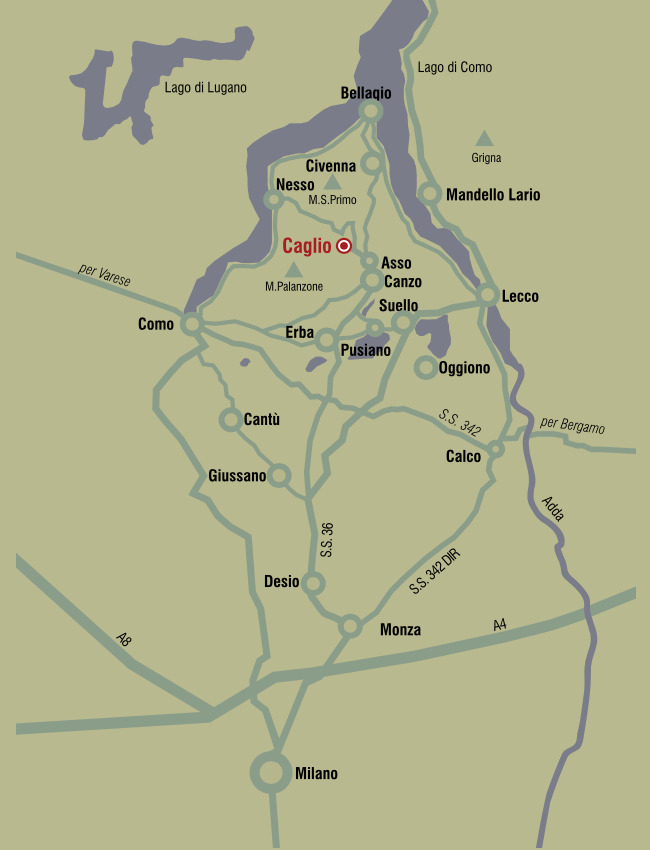
Map of Caglio and surroundings, Flyer, 2008, Caglio, Italy. Comune di Caglio.
The Artist
Segantini was born in Trento but grew up in Milan, living a difficult infancy and adolescence. He would then attend the famous Brera Academy and meet some of the most influential artists of the period. These events were a fundamental beginning for his work. In 1881, together with his partner Bice Bugatti (aunt of the famous Carlo, designer, and the less famous Rembrandt, incredible artist), Segantini went to Brianza, a geographical zone just in the north of Milan. He changed to different locations in Brianza, living initially next to a lake, then he moved even farther north, settling in Caglio, just at the foot of the Alps.
His choice of moving within these environments speaks to the painter’s need of being surrounded by nature. On the one side, he wanted to find again the peace and tranquility of infancy. On the other side, that showed his refusal of “metropolitan” life and art.
In Brianza, Segantini realized paintings that represented agricultural themes but also subjects in vogue at that time. He followed an unusual path: recreate the essence of those landscapes, their inhabitants and their everyday lives.
Moreover, here his style dramatically evolved. He lived in Caglio for six months only, in 1885, totally alone. Despite the short period, it was enough to conceive and realize At the Fence (Alla stanga), a monumental and iconic canvas. With that execution, he probably perceived the incredible step he had taken in his proper artistic development. Therefore, in 1886 he went back to Milan. However, he was unsatisfied, and desired to go “back to basics”. That’s why he left again, going towards the mountains until he found his definitive home, in the Swiss Alps.
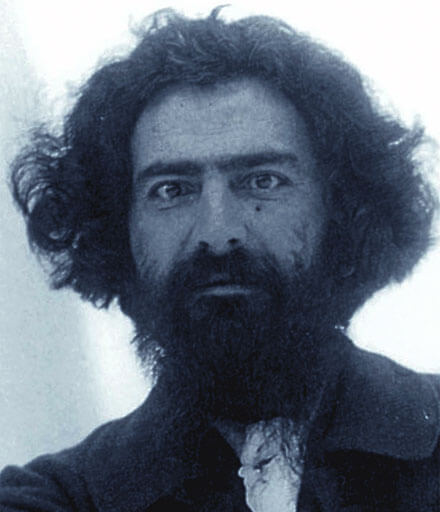
Giovanni Segantini, end of 20th century, Italy. Biografie online.
The Pathway
The pathway consists of a footpath along the town and the nearby campaign, with 13 points of interest representing 15 of Segantini’s most famous canvas paintings. They have been accurately selected and precisely reproduced in high quality and large size. All are well-placed—visible en plein air in the most beautiful corners of the medieval town. They reproduced the whole experience of the artist, ranging before and after the Brianza period.
Some of these paintings deserve a special mention for their theme, their role in Segantini’s career, or… just for their beauty. Let’s discover them! After each painting title, you will find a letter that corresponds to the letter in the original map of the pathway, that you can see just following.
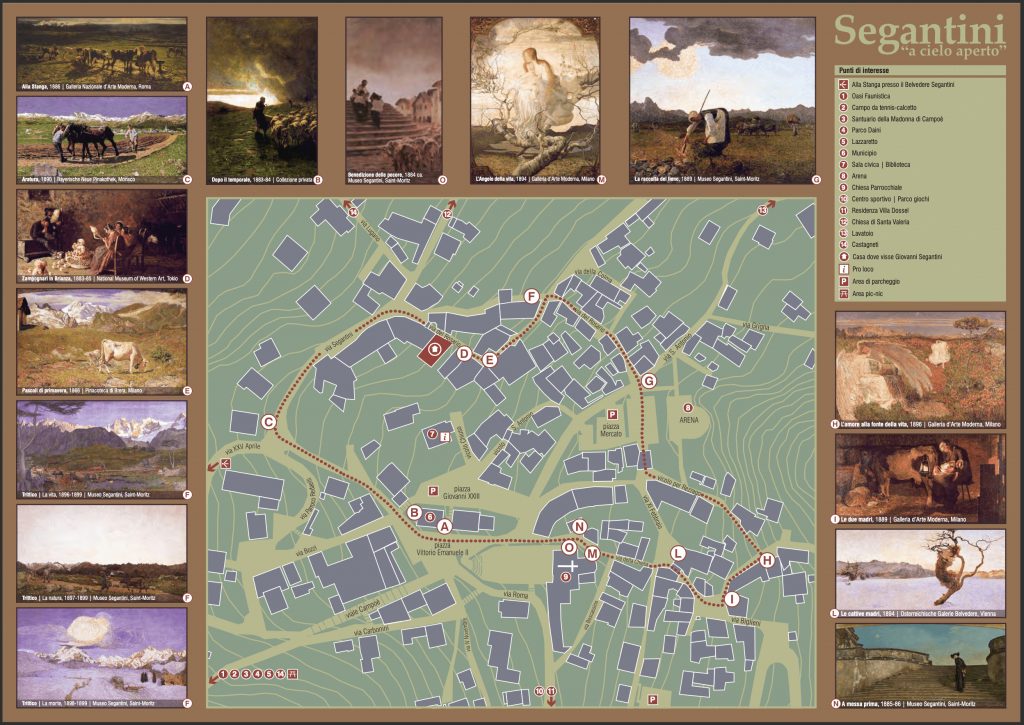
Map of the Segantini pathway, Flyer, 2008, Caglio, Italy. Comune di Caglio.
Segantini and Nature
Nature is the first main theme of Segantini in Brianza. He recreates episodes from agricultural life with a peaceful atmosphere, like in Plowing (Aratura), but also very realistic canvas like After Storm (Dopo il temporale). Here, heavy brushstrokes contribute to evoking wet (and therefore heavy) clothes and sheep coats. The soil and the grass are fertile again. And the dark clouds make way for a new sunrise and a couple of birds.
Segantini and Spirituality
Soon, Segantini realized that nature in itself is not enough for a subject. He moved to more spiritual main themes, like in Early Mass (A messa prima).
In the painting, the priest is going upstairs towards the church, at sunrise, to give mass. That’s the emblem of spirituality. First of all, the priest is an evident person of spirituality. Secondly, his attitude and solitude recall a very intimate moment, in total meditation and contact with the essence of life. The stairs could be the symbol of the path of life.
Originally, the painting showed a woman, probably a single mother, going downstairs. Two priests laughed at her. The canvas, whose title was Unforgiven and had an opposite meaning, had success in exhibitions. Nevertheless, Segantini painted over it, creating a new artwork. Experts think that the birth of his son, and generally the familial stability of the period, could have caused the new attitude of the painter. This method of painting over an unsatisfactory canvas always remained a typical characteristic of Segantini.
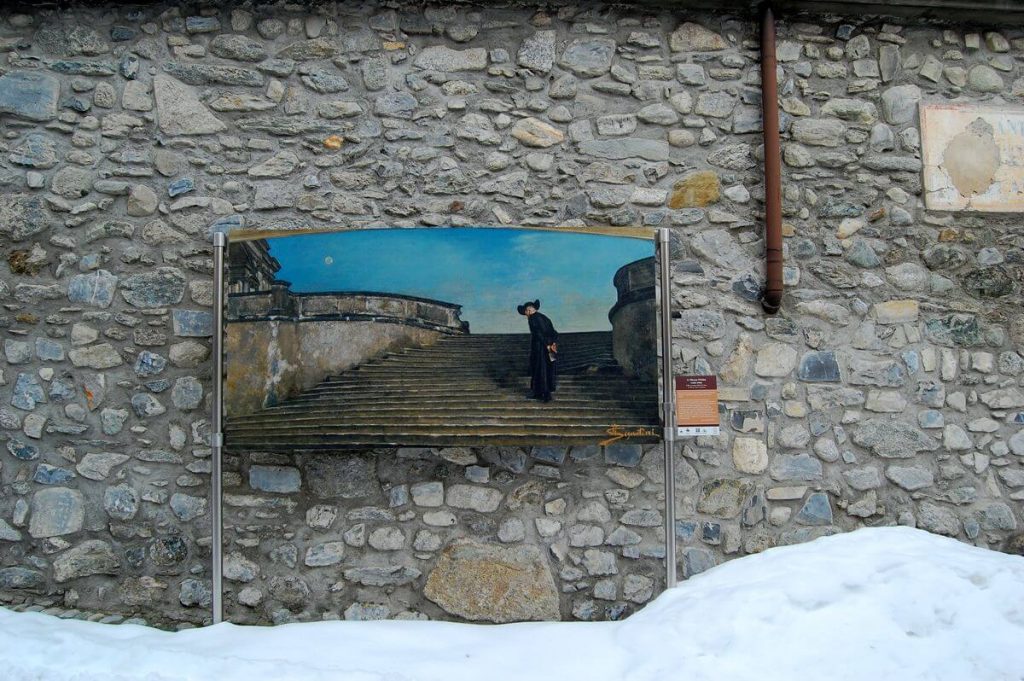
Reproduction of Giovanni Segantini, Early Mass, 1884-1886, Caglio, Italy. Procaglio.
And Their Fusion
The first masterpiece ever created by Segantini is At the Fence (Alla stanga), painted at the end of the period in Brianza. The canvas immediately had great success. It received the golden medal at the Universal Exposition in Amsterdam, and the Italian Government bought it for the National Gallery of Modern Art in Rome.
This painting shows a clear level reached in technical evolution and subject organization and suggests further development of the artist and his themes.
Segantini often used to paint en plein air, and for this piece, he worked in Caglio and realized the atmosphere of an autumn evening, someway idealized and transfigured by emotions. The cows are conducted to the fence, waiting for milking, and some women peasants are taking care of them. Milking, in particular, was a typically feminine activity. For the realization of one of these women, the nanny of Segantini’s little daughter posed. They are all wearing clothes typical of the time in north Italy.
Actually, the fence is just a chance for underlining the vastness of country, hills, and mountains. The canvas seems to celebrate the everyday life of farmers, but the activity is just an excuse, too. Segantini wanted to focus on the beauty of sharing moments of life, deep in nature. In other words, it’s a symbolic moment to enhance union among human beings and between humans and nature. This is the first spark of Symbolism that the artist would further develop in the following years. Mountains are symbolic, too: a mountain chain like the one in At the Fence is not visible anywhere in north Italy. Segantini assembled different points of view in one, in order to give majesty to the “frame”.
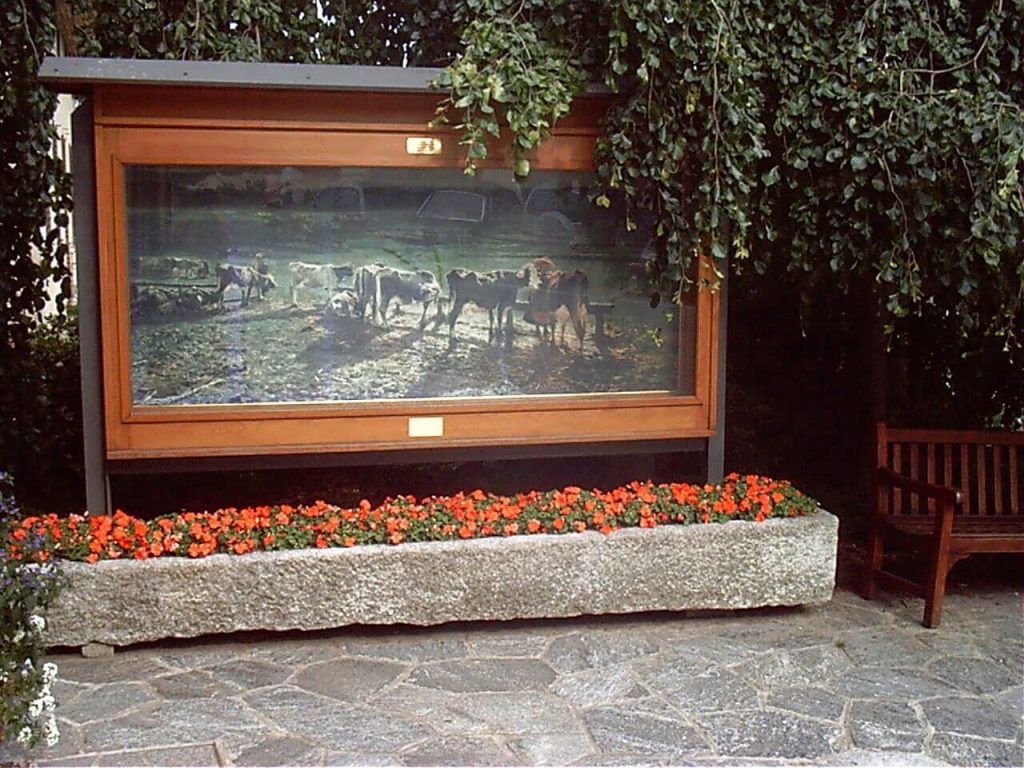
Reproduction of Giovanni Segantini, At the fence, 1886, Caglio, Italy. Procaglio.
Devotion to Symbolism
While continuing to represent fully naturalistic subjects, in which humans progressively lost importance, on Segantini also definitively committed to symbolic artworks. Nevertheless, the two sides of the artist never really split. His symbolic canvases always used nature to represent concepts. In other words, his definitive style is a “naturalistic symbolism” — nature is mother and stepmother, symbol of emotions, concepts, and relationships.
The most suggestive example is the Nature Triptych. This cycle was actually left unfinished, due to the sudden death of the artist. It is composed of Life, Death, and Nature, all paintings representing landscapes of the Swiss Alps. That’s why it is also called Alpine Triptych.
Life is spring at twilight, mothers spend time with their children, a farmer takes care of a calf. Death is a desolate funeral during winter, in which women and children are praying in the snow while waiting for a corpse to be accompanied to burial. However, the moment of the day is sunrise, and strange clouds may suggest the return of everyone as spirit. Nature represents a peasant couple driving their cows and calf along the mountain path back home to their shed, at the end of a long workday in autumn.
Everything is full of resignation, both animals and human beings can’t live but in this way of acceptance. That’s not a public outcry, which is totally nonexistent in Segantini. Simply, the peasants know they cannot dominate nature, therefore they adapt to it and passively accept it, trying to be fully in tune with it. Death and life are always linked in the frame of nature, in the perpetual cycle of the seasons, between birth and death.
Beginning of Divisionism
As far as it concerns the technique, the artist progressively began to use different size brushes and spatulas on the same canvas, giving more and more importance to the heavy brushstrokes and the texture of the painting materials. In his last masterpieces, he arrived at a declared divisionism.
Divisionism is a technique in which colors are put on canvas in long filaments, some of them in their purity – i.e. not mixed together. This technique was based on new optical theories, according to which colors could be applied pure and one next to the other on paintings because the human eye itself was able to fuse them together.
This innovative and modern technique gave, even more, a sense of a suspended atmosphere in these last, definitive Segantini’s artworks.
The Artist and the Theme of Maternity
The complex question of maternity deserves a special mention.
Maternity is constantly present in the oeuvre of Segantini and includes all of his subjects, characteristics, and themes. The mother of the painter died when he was 7, so he always looked for real and symbolic mothers as subjects throughout his whole career.
In Two Mothers (Le due madri) the reference is evident. On the one hand, the artist represents the common life of a woman farmer. On the conceptual level, there’s a human mother but also an animal one, to represent the definitive symbol of maternity. In other words, this event is in common between human beings and animals. In this way, humanity is simply included in the animal realm; human beings are themselves part of the beautiful, peaceful nature.
In The Angel of Life (L’angelo della vita) similar symbolic hints are visible. The angel is the symbol of the female origin of humanity, but also of nature, as the origin of everything.
The Evil Mothers (Le cattive madri) shows the other side of the moon. Heavy, sensual bodies of women are punished for having refused maternity. The mothers, tied by branches of a dead tree, hear the voices of their sons, whose heads emerge from the ice at the roots of the tree. In the foreground, a little head attacks the breasts of its mother. In the background, a redeemed couple begins its pathway to happiness. The whole environment is full of ice, like Dante’s Inferno. A booklet, Nirvana, could have inspired this new canvas on the usual theme of humanity as part of nature, under all its aspects.
